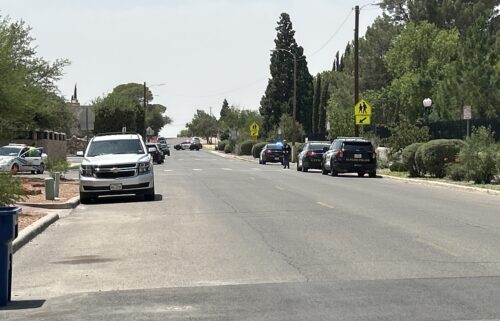EP schools team up with UIL to track brain injuries in young athletes
Concerns over concussions in youth sports has led the University Interscholastic League, the governing body of public high school sports in Texas, to team up with a medical center to track brain injuries.
With more than 800,000 public high school athletes in the state, including tens of thousands in the Borderland, the hope is to create the largest database of its kind to gauge whether rules or equipment changes are improving player safety and what more can be done to protect them.
Most concussions occur in football, but about two-dozen different sports will be tracked. Officials say the study of Texas high school athletes will be a key step in developing a national database for brain injuries in youths. The federal Centers of Disease Control and Prevention are already seeking federal funding for that national database.
“YISD has been doing it for the past year,” YISD Senior Communications Specialist Chris Lechuga told ABC-7. “Athletic trainers track it on an I-Pad. They can update the symptoms, that way they have a database, starting in middle school going forward.”
“Until we understand what the frequency of concussions is across the state, or a region of the state, we can’t determine when rule changes, equipment changes or things like recovery programs are really being effective,” said Dr. Munro Cullum, a professor of psychiatry and neurology, who will lead the study.
Hanks High School began tracking concussions last year. Athletic Trainer Casey Rangel was glad to hear schools throughout the state will take part in this concussion study.
“If we can go ahead and provide data collections, appropriate interventions, we can only move toward a safer environment for sport,” Rangel said. “If we are collecting data throughout their seven years of sports, six years of sports, that they participate with us, we are able to make much more informed decisions when it comes to return to play and overall status of participation.”
The CDC has estimated up to 3.8 million concussions occur in sports and recreational activities every year. Some experts wonder if those numbers underestimate total brain injuries, since some may not seek treatment for mile or moderate symptoms.
UIL Deputy Director Jamey Harrison told ABC-7 the goal is to make every sport “as safe as we can make it.”
“Those scientific findings from a world class research institution will help inform policy decisions as we move forward in all of our sports, when it comes to equipment or practice limitations, or recovery strategies specifically related to head injuries,” Harrison said. “All of those things are in play now that we have this very comprehensive database at work.”
The world class institution working with the UIL is the O’Donnell Brain Institute at UT Southwestern Medical Center in Dallas.
Cathy Lightbourn’s son Chris, a senior quarterback at Cathedral who led his team to a TAPP’s state title, suffered a concussion as a freshman. She told ABC-7 she’s glad the UIL is now tracking concussions.
“The coaches took it very seriously and automatically put him on concussion protocol, had him tested, sent me to the doctor, so it sure made me think twice,” Lightbourn said. “As the education improves, and the coaches are more aware, and if there’s equipment changes, it could drastically affect how we play and the rules of play and make the kids safer. Now that they’re looking at it and they’re going to be evaluating it, that’s excellent, because as he goes off to college, God willing, if he’s going to play college ball, this will be utilized across the gamut of football.”
The Associated Press contributed to this story.


